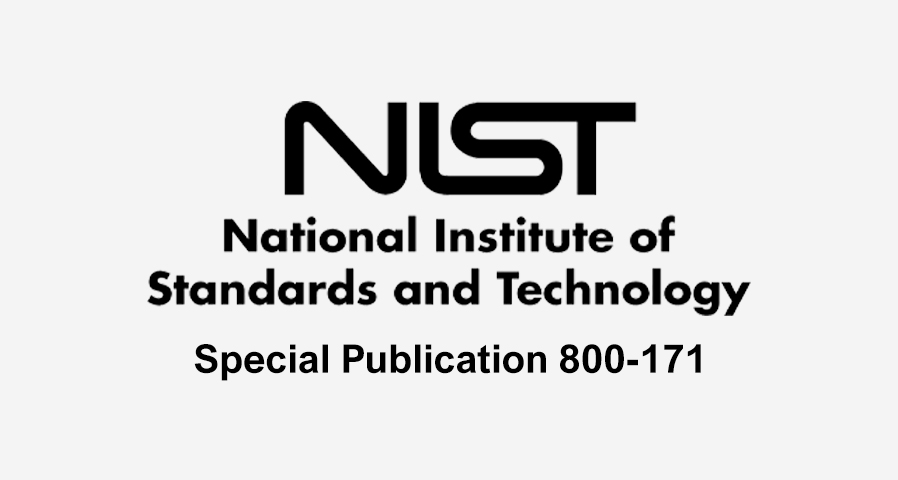What is NIST SP 800-53 Rev 5?
As technology continues its rapid advancement, it becomes imperative to adapt and enhance the safeguards that underpin the development of secure and robust Federal information systems. On September 23, 2020, the National Institute of Standards and Technology (NIST) took a significant step by updating the control guidelines outlined in Special Publication (SP) 800-53 Revision 5 (hereafter referred to as Rev. 5), titled “Security and Privacy Controls for Information Systems and Organizations.” This update, coming seven years after the release of SP 800-53 Rev. 4 (hereafter referred to as Rev. 4), was designed to align with the constantly evolving landscape of information security. It specifically expanded its coverage to address emerging areas, including cloud computing, insider threats, application security, and supply chain security. Notably, the official withdrawal of Rev. 4 is set for September 23, 2021.
Seven years have passed, raising numerous questions regarding the alterations in controls and their repercussions for agencies. Presented below are three pivotal inquiries along with their corresponding answers, facilitating the initial steps in comprehending these changes. This understanding will enable agencies and system owners to commence their preparations for compliance.
What if you’re already compliant with Rev 4, what’s the impact going to Rev 5?
While the primary modifications are concentrated within the SR, PT, and PM control families, it’s essential to note that these new controls constitute only a fraction of the overall changes in Rev. 5. This is evident in the accompanying graphs, namely “NIST SP 800-53 Rev. 4 to Rev. 5 Changes to Moderate Baseline Controls” and “NIST SP 800-53 Rev. 4 to Rev. 5 Changes to High Baseline Controls.” This transition entails the introduction of 46 new controls and more than 200 significant and minor adjustments in the Moderate baseline. Additionally, there are 59 new controls and over 300 major and minor control alterations in the High baseline. Consequently, agencies will be confronted with the considerable task of updating their agency-wide and system-specific control baselines, revising System Security Plans, and adapting most existing policies and procedures to ensure full compliance.
What is the PT control family?
Privacy standards have a longstanding history, and while not a novel concept, Rev. 5’s PT control family takes a different approach by integrating previously existing privacy controls into standard control baselines. This marks a departure from Rev. 4, which segregated privacy controls into a separate appendix. Additionally, Rev. 5 includes the integration of some privacy controls into the PM family. These alterations underscore the centrality of privacy as a fundamental component of security and necessitate substantial collaboration between Security and Privacy Teams to ensure consistent procedures and elevate the prominence of privacy governance. Privacy is now not confined to individual systems but forms an integral pillar of a robust security program.
What is the SR control family?
In contrast to the “novel” privacy controls, the SR control family introduces controls and concepts that have not been previously featured in the control baselines. Expanding upon principles delineated in NIST SP 800-161, titled “Supply Chain Risk Management Practices for Federal Information Systems and Organizations,” NIST underscores the criticality of supply chain security. This is accomplished through the integration of supply chain controls into the PM family and the establishment of the new SR family.
Developing a robust SR program, rooted in NIST’s guidance, necessitates robust collaboration among agency security teams. Historically, supply chain security hasn’t played a significant role in an agency’s day-to-day operations. However, the emergence of supply chain risk as a tangible and pressing threat to organizational security underscores the urgency of addressing this issue.
Difference between Rev 4 to Rev 5
| Controls | Li-SaaS | Low | Moderate | High |
|---|---|---|---|---|
| Rev 4 | 29 | 125 | 325 | 421 |
| Rev 5 | 66 | 156 | 323 | 410 |
| Net Change in Controls | +127% | +25% | -1% | -3% |
1. Organization and Structure:
Rev. 4: In Rev. 4, controls were organized into 18 families. These controls were primarily focused on information security.
Rev. 5: Rev. 5 reorganized the controls into 23 families, with a shift in terminology from “families” to “groups.” This restructuring was aimed at making the document more comprehensive, reflecting the evolving nature of security, and accommodating new areas of concern.
2. Integration of Privacy:
Rev. 4: Privacy controls in Rev. 4 were kept separate in an appendix (Appendix J) and were not fully integrated into the main framework.
Rev. 5: Rev. 5 fully integrates privacy controls into the core control baselines. This means that privacy is no longer considered an add-on but a fundamental aspect of security, represented in the Privacy Control Family (PT) and dispersed within other families like PM (Program Management).
3. Supply Chain Controls:
Rev. 4: Supply chain security was not a prominent feature in Rev. 4.
Rev. 5: Rev. 5 introduces a new Supply Chain Risk Management Control Family (SR), emphasizing the significance of supply chain security. Supply chain controls are integrated into PM and SR families to address growing concerns in this area.
4. Increased Number of Controls:
Rev. 4: Rev. 4 had a total of 256 security controls in the baseline. It contained a more limited set of controls compared to Rev. 5.
Rev. 5: Rev. 5 significantly expands the number of controls. It introduces new controls and adjusts existing ones. The Moderate baseline now contains 198 controls, while the High baseline has 328 controls. This expansion aligns with the evolving threat landscape and technology environment.
5. Focus on Resilience:
Rev. 4: While security and compliance were key in Rev. 4, the term “resilience” was not prominently featured.
Rev. 5: Rev. 5 places a greater emphasis on resilience, acknowledging the need for systems to withstand and recover from disruptions and threats effectively.
In summary, SP 800-53 Rev. 5 represents a significant update to the previous version, incorporating changes in structure, privacy integration, supply chain security, and an expanded set of controls. This revision reflects the dynamic nature of information security, emphasizing the importance of not only safeguarding data but also ensuring its privacy and resilience in an ever-changing threat landscape.
Share This Article
How can I help?
With over 2+ decades of experience in the field of IT and compliance, I have successfully overseen multiple FedRAMP certifications and a dozen ATOs within the realms of the DOJ and DOD.
“Chue is a brilliant technologist who is a SME for everything with InfoSec and Federal Government Compliance. He is incredibly diligent, hard-working and is able to easily discuss complicated technical matters with both experts and beginners. His can-do, humble attitude made it a distinct pleasure to work with and learn from him.”
Other endorsements…
“Working with Chue has been an honor. He’s incredibly knowledgeable and always travels out of his way to offer assistance and guidance. He made sure our systems were completely secure and gave us the peace of mind to focus on our responsibilities without worry of interruption.
Outside of a work capacity, Chue has been a positive and motivating force and he has a keen ability to instill trust.”
Experts who understands the Federal landscape
Imagine a world where organizations enthusiastically embrace cutting-edge AI technology, harnessing its power to gain profound insights into high-risk scenarios and propelling themselves toward their core business objectives with confidence!
Here at FabricLake, we take the charge in revolutionizing federal compliance solutions! We’ve masterfully entwined the power of artificial intelligence into the very essence of our compliance processes. This astute integration doesn’t just optimize workflows; it paves the way for seamless task management and issue resolution, all while upholding the highest industry standards. In the heart of our Federal Compliance division, AI has seamlessly woven itself into the fabric of our operations, giving birth to RiskGuardian360 – a specialized application that unleashes the full potential of AI to steer us towards our compliance objectives with unwavering determination. Join us in embracing this cutting-edge technology and watch your compliance needs transform into opportunities for excellence!







